FAQ - Advanced Bathroom Queries
What Is Rough in Size for Toilet
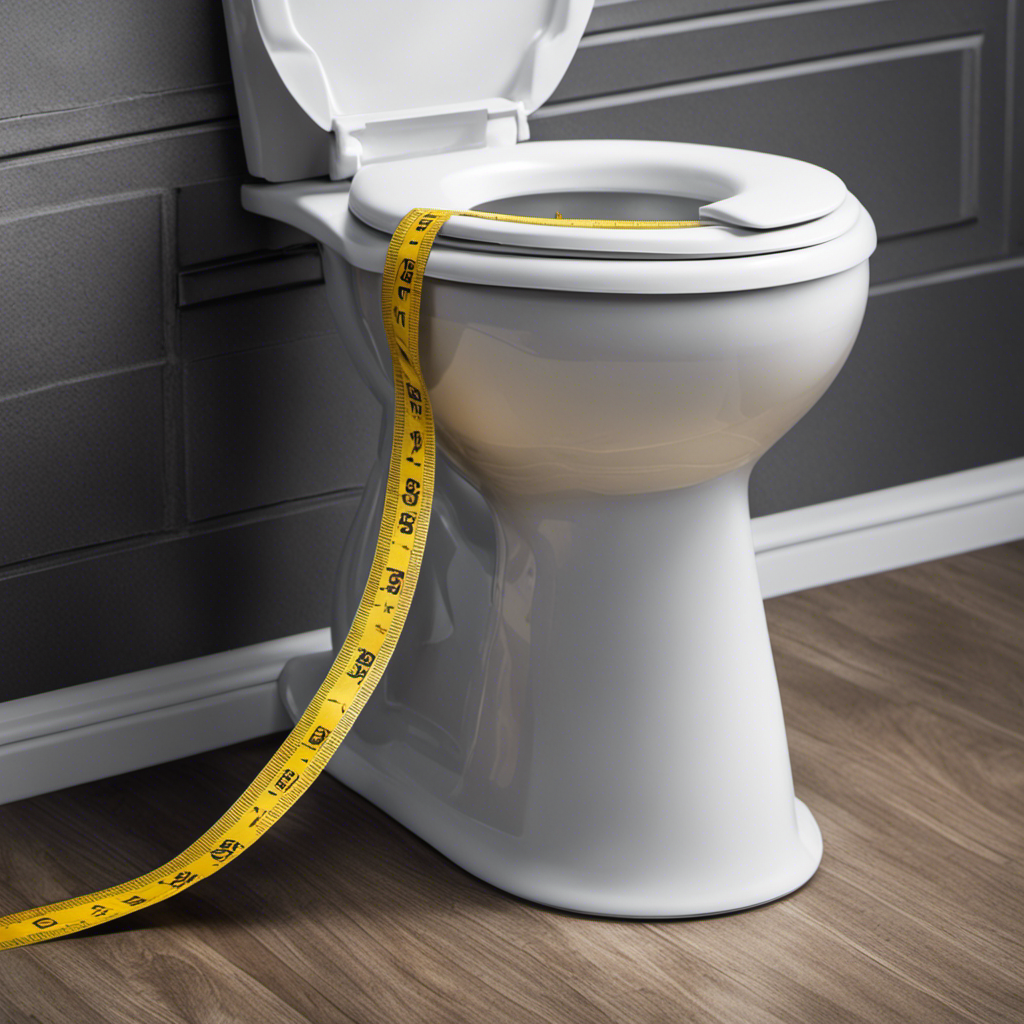
Have you ever wondered what the rough-in size for a toilet is?
Well, I’m here to shed some light on this important aspect of bathroom design. Understanding the rough-in measurements is crucial when installing or replacing a toilet.
In this article, we will explore the common rough-in sizes, how to measure them accurately, and the consequences of getting it wrong.
So, if you want to ensure a seamless toilet installation, keep reading to discover all you need to know about rough-in sizes.
Key Takeaways
- Rough-in sizes for toilets typically range from 10 to 14 inches, with 12 inches being the standard size for most residential toilets.
- Proper rough-in measurement is crucial for a well-designed bathroom and ensures the toilet fits properly and aligns with the plumbing system.
- Incorrect rough-in size can lead to issues like improper alignment, leaks, and damage to the toilet or flooring.
- Adjustments can be made using offset flanges or adjustable flanges to accommodate different toilet types and their corresponding rough-in sizes.
Common Rough-In Sizes for Toilets
Common rough-in sizes for toilets typically range from 10 to 14 inches. The rough-in measurement refers to the distance between the wall and the center of the toilet’s drainpipe. It is an essential factor to consider when installing or replacing a toilet.
The most common toilet rough-in sizes are 10, 12, and 14 inches. The 10-inch rough-in is less common and often found in older homes. The 12-inch rough-in is the standard size for most residential toilets. The 14-inch rough-in is typically used for larger or ADA-compliant toilets.
Understanding rough-in measurements is crucial because it ensures that the toilet fits properly and aligns with the plumbing system. Now, let’s delve into a deeper understanding of rough-in measurements.
Understanding Rough-In Measurements
When it comes to installing a toilet, understanding the importance of rough-in measurements is crucial. The rough-in measurement refers to the distance between the wall and the center of the toilet’s waste outlet.
Standard rough-in sizes typically range from 10 to 14 inches, although other sizes may be available. It’s important to adjust for different toilets to ensure proper alignment and functionality.
Importance of Rough-In
To ensure proper installation, measure the rough-in distance from the wall to the center of the toilet flange.
The importance of proper installation cannot be overstated, as it directly impacts the functionality and aesthetics of your bathroom. The rough-in size determines the positioning of the toilet and affects the overall bathroom design.
If the rough-in size is incorrect, it can lead to issues such as improper alignment, leaks, and even damage to the toilet or surrounding flooring. Additionally, an incorrect rough-in size can limit your options when it comes to choosing a toilet, as not all toilets are compatible with every rough-in size.
Therefore, it is crucial to accurately measure the rough-in distance before purchasing and installing a toilet. This will ensure a hassle-free installation and a well-designed bathroom.
In the next section, we will discuss the standard rough-in sizes and their significance in toilet installations.
Standard Rough-In Sizes
The standard rough-in sizes determine the distance between the wall and the center of the toilet flange, which is essential for proper installation. These sizes are standardized to ensure compatibility with most toilets. However, it is important to note that not all toilets have the same rough-in size. Therefore, it is necessary to adjust the rough-in size for different toilets. This can be done by using offset flanges or adjustable flanges. An offset flange allows you to move the toilet further from the wall or closer to it, depending on your needs. An adjustable flange, on the other hand, allows you to adjust the rough-in size within a certain range. By making these adjustments, you can ensure that your toilet fits perfectly and functions properly.
| Toilet Type | Rough-In Size |
|---|---|
| Standard | 12 inches |
| Compact | 10 inches |
| Elongated | 14 inches |
Adjusting for Different Toilets
It’s important to note that not all toilets have the same rough-in size, so adjustments may be necessary for different models. When installing a toilet with a different rough-in size, there are a few steps to follow to ensure a proper fit:
-
Measure the rough-in size: Use a tape measure to determine the distance between the wall and the center of the sewer pipe. This measurement will determine the rough-in size.
-
Purchase the correct toilet: Look for a toilet that matches the rough-in measurement you obtained. Most toilets have a rough-in size of either 10, 12, or 14 inches.
-
Make adjustments if needed: If the rough-in size of the toilet you purchased doesn’t match the measurement you took, you may need to make adjustments. This can involve moving the flange or using offset flanges or adjustable toilet carriers.
-
Seek professional help if necessary: If you’re unsure about adjusting the rough-in size or encounter any difficulties, it’s best to consult a professional plumber for assistance.
Following these steps will help ensure a successful toilet rough-in installation, even when dealing with different rough-in sizes.
Factors to Consider When Determining Rough-In Size
When determining rough-in size for a toilet, you should consider factors such as available space and plumbing requirements. The rough-in size refers to the distance between the wall and the center of the toilet flange. This measurement is crucial for proper installation and ensures that the toilet aligns with the drain pipe. The standard rough-in size is 12 inches, but there are other options available, such as 10 inches or 14 inches, to accommodate different plumbing setups. Factors to consider when deciding on the rough-in size include the layout of the bathroom, the location of the sewer line, and any existing plumbing fixtures. By taking these factors into account, you can select the appropriate rough-in size and ensure a smooth installation process.
| Rough-in Size (inches) | Adjusting Options |
|---|---|
| 10 | Limited space, off-center drain |
| 12 | Standard size, most common |
| 14 | Extra clearance, larger bathroom |
How to Measure Rough-In Size for a Toilet
To measure the rough-in size for your toilet, start by locating the center of the toilet flange and measuring the distance from the wall. This measurement is crucial in determining the correct rough-in size for your toilet installation.
Here are the steps to measure the rough-in size accurately:
- Locate the center of the toilet flange.
- Measure the distance from the wall to the center of the flange.
- Ensure that the measurement is precise and accurate.
- Use this measurement to determine the rough-in size for your toilet.
Consequences of Incorrect Rough-In Size
Using the wrong rough-in size for your toilet installation can lead to costly and time-consuming consequences.
One of the main consequences of improper rough-in size is leakage. If the rough-in size is too small, the toilet may not fit properly, causing gaps between the toilet and the floor. This can result in water leakage every time the toilet is flushed, leading to water damage and expensive repairs.
On the other hand, if the rough-in size is too large, the toilet may not be stable and secure, causing it to wobble or shift. This can also lead to leakage and potential damage to the surrounding flooring.
Troubleshooting rough-in size errors should be done carefully to avoid these consequences. It is essential to measure and double-check the rough-in size before purchasing and installing a toilet, ensuring a proper fit and preventing any future issues.
Adjusting Rough-In Size: Options and Limitations
When it comes to adjusting the rough-in size for a toilet, there are several plumbing considerations to keep in mind. Making mistakes in rough-in measurements can lead to costly and time-consuming issues down the line. Here are some common mistakes to avoid:
- Incorrectly measuring the rough-in distance, resulting in a toilet that doesn’t fit properly against the wall.
- Failing to account for the thickness of the finished wall, causing the toilet to stick out too far or not sit flush.
- Neglecting to consider the clearance requirements for water supply lines and waste pipes, leading to cramped or obstructed spaces.
- Forgetting to adjust the rough-in size for a different toilet model, resulting in misalignment and potential leaks.
To avoid these problems, it’s crucial to carefully measure and adjust the rough-in size, taking into account all the necessary plumbing considerations.
Tips for Choosing the Right Rough-In Size for Your Toilet
Make sure you carefully consider the measurements and plumbing requirements before selecting the right rough-in option for your bathroom.
When choosing a toilet brand, it is essential to understand the rough-in size, which refers to the distance between the wall and the center of the toilet drain. This measurement determines the toilet’s position and compatibility with your plumbing system. Troubleshooting toilet installation issues can often be avoided by selecting the correct rough-in size.
To determine the rough-in size, measure from the wall to the center of the existing toilet flange. Common rough-in sizes include 10 inches, 12 inches, and 14 inches. Ensure that the toilet you choose matches the existing rough-in size or, if necessary, make the required adjustments during installation.
Conclusion
In conclusion, determining the correct rough-in size for your toilet is crucial to ensure a proper fit and functionality. It’s like finding the perfect puzzle piece that seamlessly fits into the bigger picture of your bathroom.
By understanding the measurements, considering factors such as plumbing and space limitations, and accurately measuring the rough-in size, you can avoid the unfortunate consequences of an incorrect fit.
Remember, there are options available for adjusting the rough-in size, but it’s always best to choose the right size from the start. So, take your time and choose wisely for a toilet that fits like a glove.
With an impeccable eye for detail and a passion for bathroom-related, Ava leads our editorial team gracefully and precisely.
Under her guidance, Best Modern Toilet has flourished as the go-to resource for modern bathroom enthusiasts. In her free time, you might find Ava exploring antique shops and looking for vintage bathroom fixtures to add to her collection.
FAQ - Advanced Bathroom Queries
What Is the Difference Between a 2 Inch and 3 Inch Flush Valve
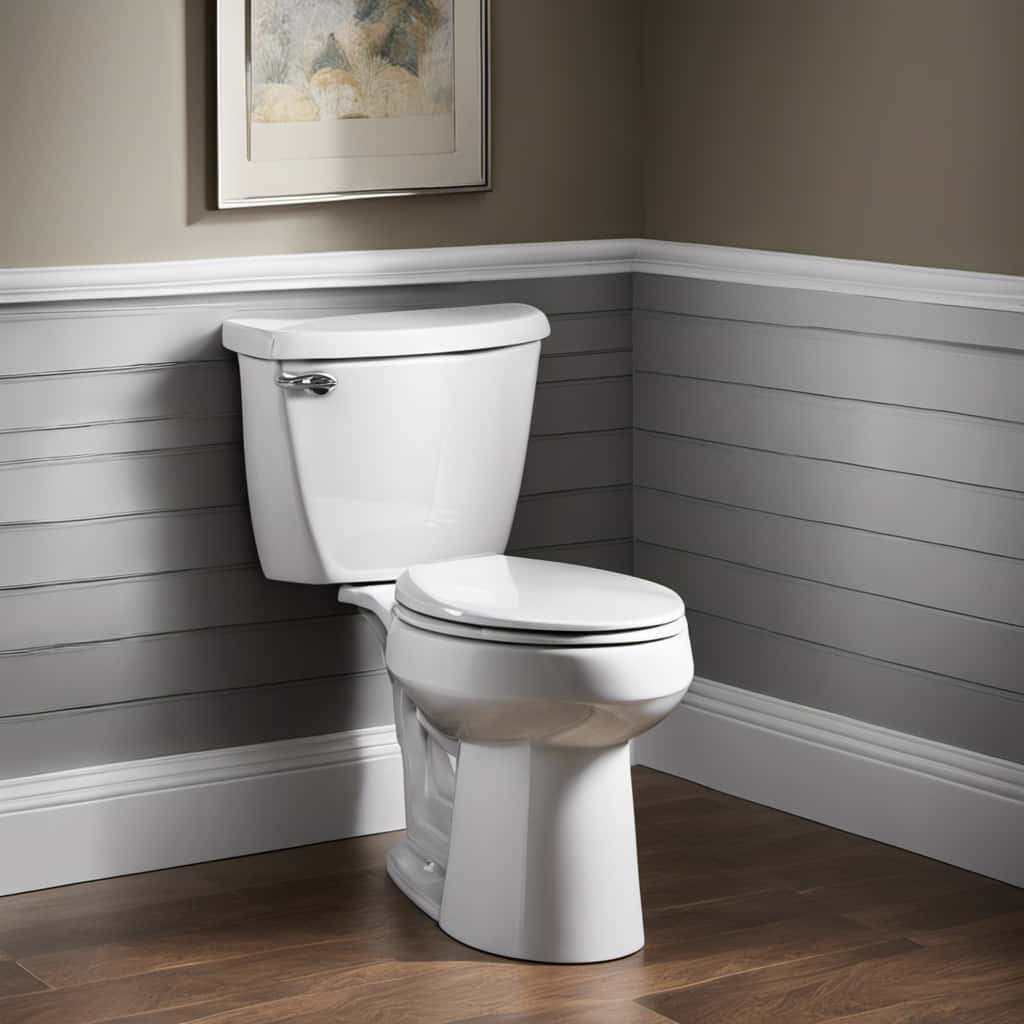
Ladies and gentlemen, let’s explore the world of flush valves and uncover the mystery of their sizes.
Have you ever wondered what sets apart a 2 inch from a 3 inch flush valve? Well, fear not, for we are here to enlighten you.
In this concise piece, we will explore the differences in water flow efficiency, flushing power, installation requirements, and cost.
So, sit back, relax, and prepare to master the art of choosing the perfect flush valve for your needs.

Key Takeaways
- The diameter of the flush valve directly affects the volume of water that can flow through it during a flush.
- 3 inch flush valves tend to be slightly more expensive than 2 inch flush valves due to their larger size and additional materials required for manufacturing.
- A larger flush valve, like a 3 inch one, provides a higher flow rate compared to a smaller 2 inch flush valve.
- The size of the flush valve impacts the force and speed at which water is released into the toilet bowl.
Flush Valve Size
When comparing flush valve sizes, it’s important to consider the diameter of the valve opening. The size of the flush valve directly affects the volume of water that can flow through it during a flush. Flush valves are typically available in 2-inch and 3-inch sizes. The choice of size depends on various factors, including the desired flushing power and the plumbing system’s capacity.
Flush valve materials also play a crucial role in determining the valve’s effectiveness and durability. Common materials used for flush valves include plastic, brass, and stainless steel. Each material has its own advantages and disadvantages in terms of cost, performance, and environmental impact. It’s essential to choose a flush valve material that balances these factors while also considering the long-term maintenance and sustainability of the plumbing system.
Considering the environmental impact is another important aspect when selecting flush valve size and material. A larger flush valve may require more water during each flush, potentially leading to increased water consumption and wastage. On the other hand, selecting a smaller flush valve may compromise flushing power and require multiple flushes, also resulting in water wastage. Therefore, it’s crucial to strike a balance between flushing efficiency and environmental responsibility when choosing a flush valve size and material.
Water Flow Efficiency
To maximize water flow efficiency, we prioritize selecting the appropriate flush valve size and material. When it comes to water pressure, a larger flush valve, such as a 3 inch one, can provide a higher flow rate compared to a smaller 2 inch flush valve. This means that more water can be flushed through the system in a shorter amount of time, resulting in a faster and more efficient flush. Additionally, a larger flush valve can also help reduce clogs and blockages, further improving efficiency. From an environmental standpoint, a more efficient flush can lessen the overall water usage, thus reducing the environmental impact. By carefully considering the flush valve size and its effect on water flow efficiency, we can make choices that benefit both performance and sustainability.

| Flush Valve Size | Water Flow Rate |
|---|---|
| 2 inch | Moderate |
| 3 inch | High |
Flushing Power
For optimal flushing power, selecting the appropriate flush valve size is crucial in maximizing the efficiency of water flow. The size of the flush valve directly impacts the force and speed at which water is released into the toilet bowl, affecting the flushing power.
Here are four key factors to consider when it comes to flushing power and choosing the right flush valve size:
- Water Pressure: A larger flush valve allows for higher water pressure, resulting in a more forceful flush and better toilet bowl cleanliness.
- Flow Rate: A larger flush valve facilitates a faster flow rate, ensuring a more efficient and thorough flush.
- Clog Prevention: The increased water volume provided by a larger flush valve helps prevent clogs by effectively pushing waste through the trapway.
- Water Efficiency: Despite the increased power, a larger flush valve can still be designed to conserve water, making it an environmentally friendly option.
Installation Requirements
Our installation requirements include ensuring that the toilet is compatible with the chosen flush valve size. Before installing a 2 inch or 3 inch flush valve, it’s crucial to consult local plumbing codes to ensure compliance. Plumbing codes vary by region and may dictate specific requirements for toilet installations. It’s essential to understand these codes to ensure proper installation and avoid any potential issues.
Additionally, toilet compatibility is a crucial factor to consider. Different toilets are designed to work with specific flush valve sizes. Installing a flush valve that isn’t compatible with the toilet may result in poor flushing performance or even damage to the toilet. Therefore, it’s important to verify the compatibility of the toilet and flush valve before proceeding with the installation.
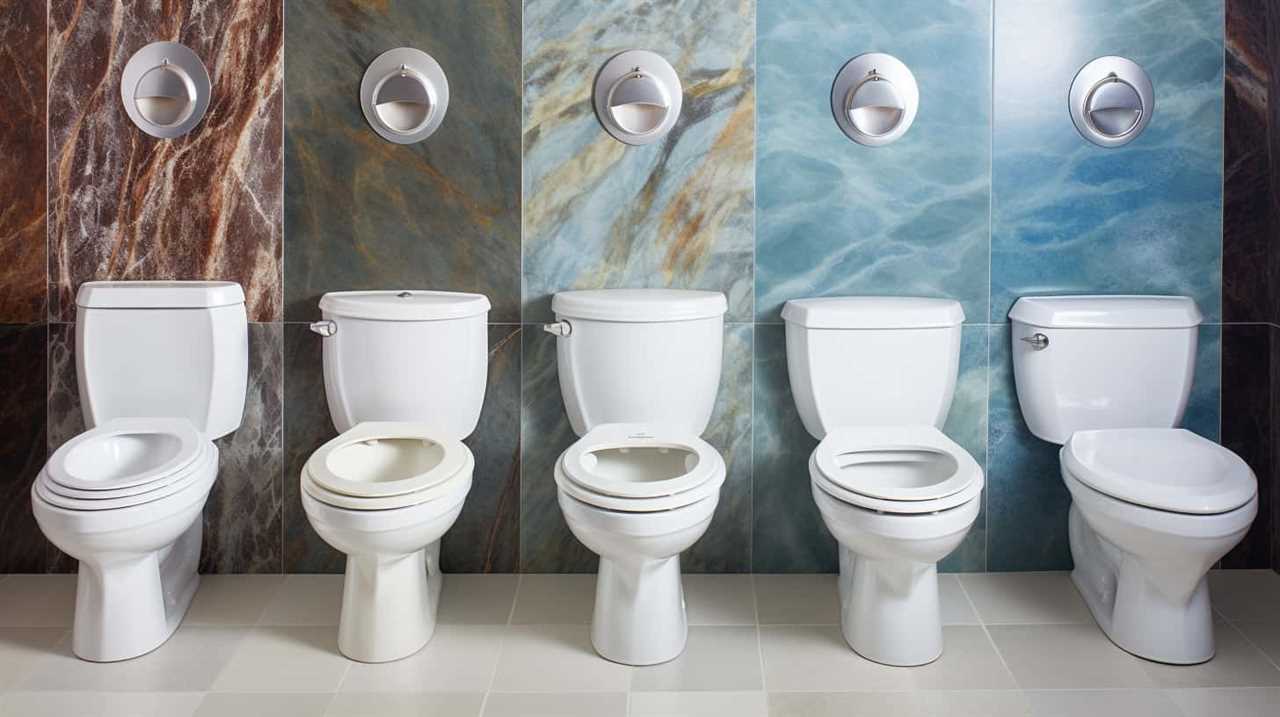
Cost and Availability
Now let’s delve into the cost and availability of 2 inch and 3 inch flush valves.
When considering the cost of these flush valves, it’s important to note that 3 inch flush valves tend to be slightly more expensive than their 2 inch counterparts. This is due to the larger size and additional materials required for manufacturing. However, the price difference is relatively small and shouldn’t be a significant factor in decision-making.
In terms of availability, both 2 inch and 3 inch flush valves are widely available in the market. They can be found in most plumbing supply stores and online retailers. It’s worth noting that due to their popularity and common use, both sizes are generally readily accessible for purchase.
Frequently Asked Questions
Are There Any Specific Toilet Models That Only Accept a 2 Inch or 3 Inch Flush Valve?
There aren’t specific toilet models that only accept a 2 inch or 3 inch flush valve. However, when considering a flush valve upgrade, it’s important to measure the existing valve size and choose a compatible replacement.

Can a 2 Inch Flush Valve Be Upgraded to a 3 Inch Flush Valve?
Yes, a 2 inch flush valve can be upgraded to a 3 inch flush valve. However, compatibility with toilet models may vary. It is recommended to consult the manufacturer or a professional plumber for guidance.
Are There Any Disadvantages to Using a 3 Inch Flush Valve Instead of a 2 Inch Flush Valve?
There are no disadvantages to using a 3 inch flush valve instead of a 2 inch flush valve. In fact, the benefits of a 2 inch flush valve include increased flushing power and improved overall performance.
Is There a Noticeable Difference in Noise Level Between Toilets With 2 Inch and 3 Inch Flush Valves?
Toilets with 2 inch and 3 inch flush valves may differ in noise level. However, the impact on water consumption is more significant. A 3 inch flush valve generally allows for a faster and more efficient flush, potentially reducing water usage.
Are There Any Maintenance or Cleaning Requirements That Differ Between Toilets With 2 Inch and 3 Inch Flush Valves?
Maintenance requirements and cleaning methods for toilets with 2 inch and 3 inch flush valves may differ. Regular maintenance, such as checking for leaks and replacing worn parts, is necessary. Cleaning methods, such as using non-abrasive cleaners, are also important for both types of valves.
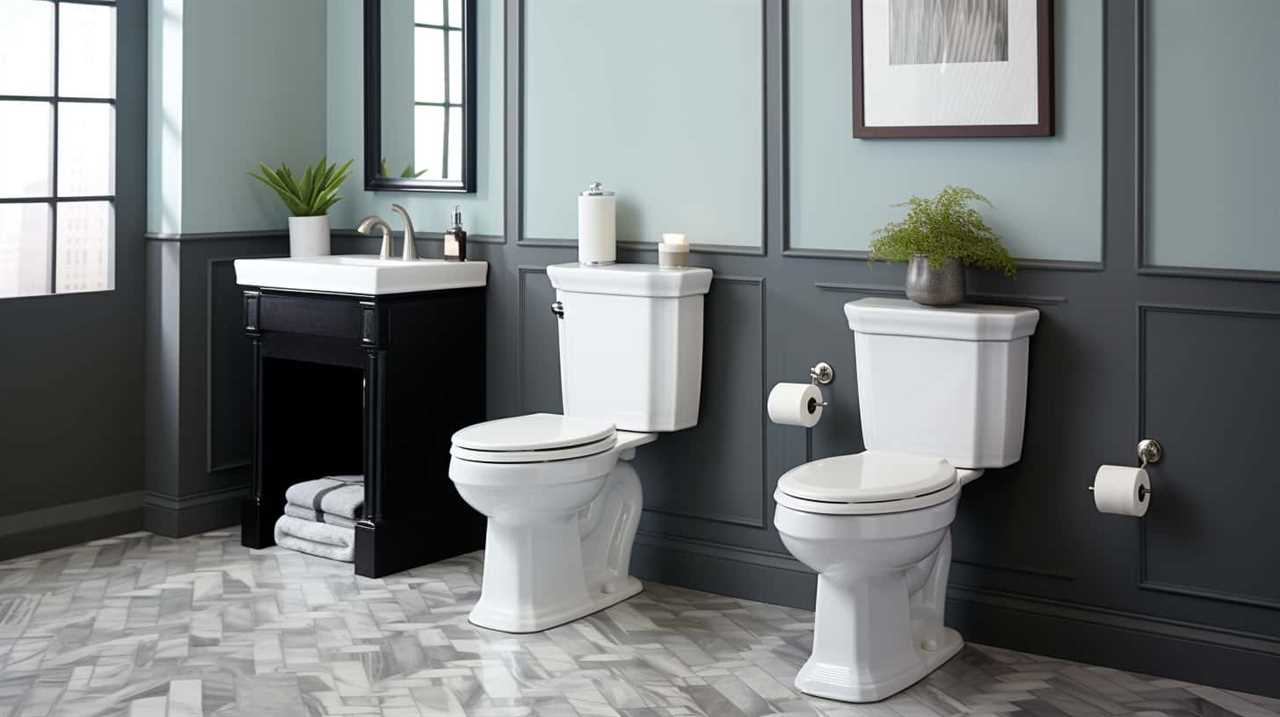
Conclusion
In conclusion, when comparing a 2-inch and 3-inch flush valve, it’s clear that the size difference plays a significant role in water flow efficiency and flushing power.
While a 2-inch flush valve may be sufficient for most residential toilets, a 3-inch flush valve provides a more powerful flush, reducing the need for multiple flushes.
Additionally, the installation requirements and cost may vary between the two sizes.
Ultimately, the choice depends on individual preferences and needs.
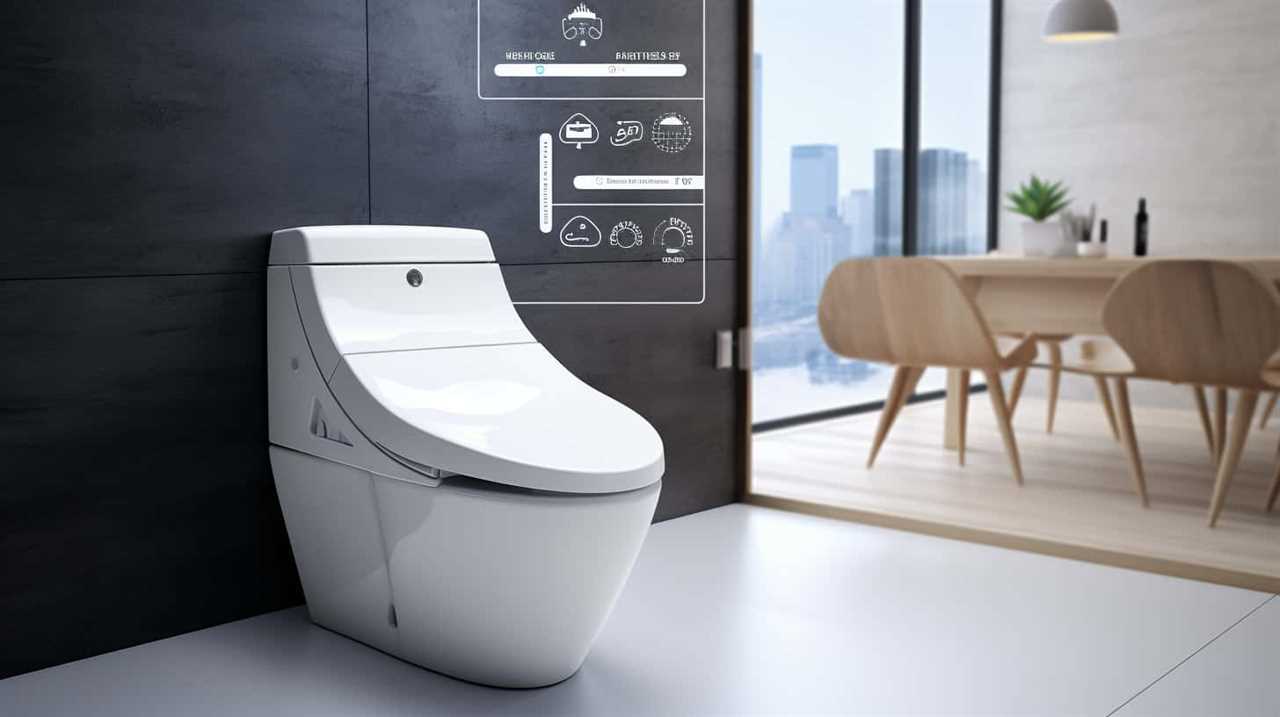
With an impeccable eye for detail and a passion for bathroom-related, Ava leads our editorial team gracefully and precisely.
Under her guidance, Best Modern Toilet has flourished as the go-to resource for modern bathroom enthusiasts. In her free time, you might find Ava exploring antique shops and looking for vintage bathroom fixtures to add to her collection.
FAQ - Advanced Bathroom Queries
Ove Bidet Toilet
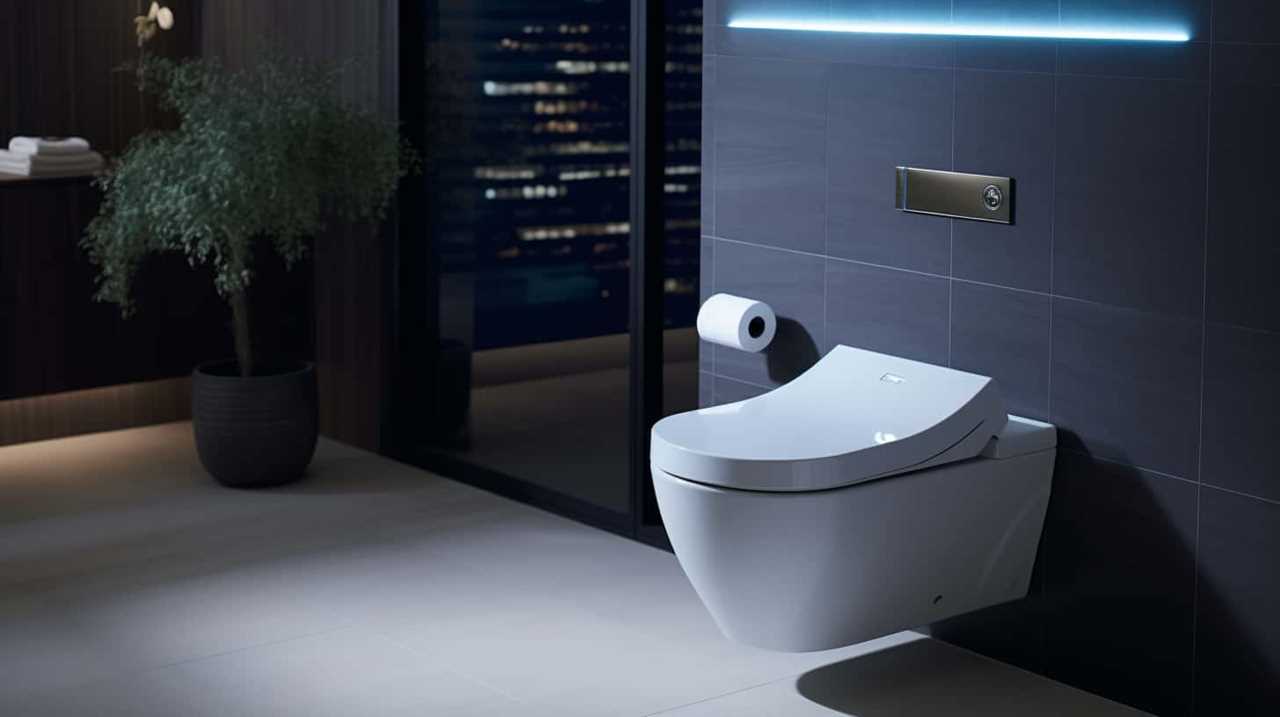
The benefits of the Ove Bidet Toilet are truly exceptional. This innovative toilet is equipped with state-of-the-art features and advanced technology, improving hygiene while offering unparalleled comfort and convenience.
Installing the Ove Bidet Toilet is a breeze, and with proper maintenance, it will serve you flawlessly for years to come.
Join us as we delve into the world of bidet toilets and compare the Ove Bidet Toilet to traditional alternatives, empowering you with the knowledge to make an informed decision.
Key Takeaways
- Ove Bidet Toilet provides a more thorough and hygienic cleansing experience.
- It reduces waste and saves trees by using water instead of toilet paper.
- The bidet toilet is gentle on sensitive areas and suitable for individuals with conditions like hemorrhoids or skin allergies.
- It contributes to water conservation by using significantly less water compared to traditional toilet flushing.
Benefits of Using an Ove Bidet Toilet
There are several benefits to using an Ove Bidet Toilet.

Firstly, let’s talk about the health benefits of using a bidet. Bidets provide a more thorough and hygienic cleansing experience compared to using toilet paper alone. They help to effectively remove bacteria and germs, reducing the risk of infections and irritation. Additionally, bidets are gentle on sensitive areas, making them suitable for individuals with conditions like hemorrhoids or skin allergies.
In addition to the health benefits, bidet toilets also offer environmental advantages. By using water instead of toilet paper, bidets help to reduce the amount of waste generated. This not only saves trees but also decreases the energy and resources required for toilet paper production. Moreover, bidets contribute to water conservation as they use significantly less water compared to traditional toilet flushing.
Now that we’ve discussed the health and environmental benefits of using an Ove Bidet Toilet, let’s explore its key features and functions.
Key Features of the Ove Bidet Toilet
To further enhance the user experience, the Ove Bidet Toilet offers a range of key features that make it a highly functional and convenient addition to any bathroom. With its advanced technology and comfort features, this bidet toilet provides the ultimate in cleanliness and comfort. Let’s take a closer look at some of the standout features:

| Feature | Description |
|---|---|
| Heated Seat | Enjoy the luxury of a warm seat, even on the coldest days. |
| Adjustable Jets | Choose from a variety of water pressure and temperature settings for a personalized cleansing experience. |
| Air Dryer | No need for toilet paper – the built-in air dryer gently dries you off after use. |
These features, combined with the bidet’s sleek design and easy-to-use controls, make the Ove Bidet Toilet a top choice for those seeking the highest level of hygiene and comfort in their bathroom. Experience the future of personal care with the Ove Bidet Toilet.
How to Install the Ove Bidet Toilet
Installing the Ove Bidet Toilet is a straightforward process that begins with ensuring all necessary tools and materials are readily available. To successfully install the Ove Bidet Toilet, follow these steps:
- Shut off the water supply to the toilet and drain the tank.
- Remove the existing toilet and clean the area thoroughly.
- Install the bidet seat onto the toilet bowl, making sure it’s securely attached.
- Connect the water supply hose to the bidet seat and the water source.
- Turn on the water supply and check for any leaks.
- Adjust the settings on the bidet seat according to your preference.
- Test the bidet toilet to ensure it’s functioning correctly.
Troubleshooting common issues during installation may include checking for loose connections, adjusting the water pressure, or ensuring the seat is properly aligned.
Following these steps will result in a successful installation of the Ove Bidet Toilet.
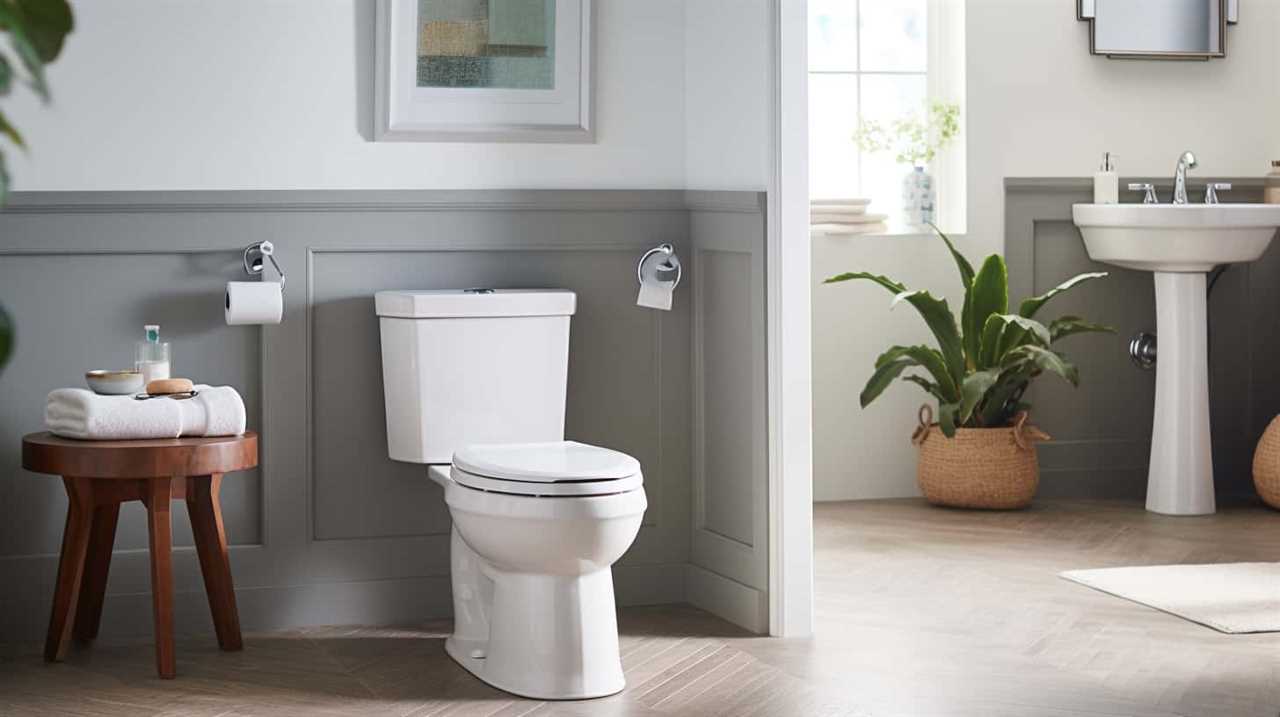
Tips for Proper Maintenance of the Ove Bidet Toilet
For proper maintenance of the Ove Bidet Toilet, we recommend regularly cleaning and disinfecting the bidet seat and bowl. This will help ensure hygiene and prolong the lifespan of the toilet. Here are some tips for maintaining the Ove Bidet Toilet:
- Clean the bidet seat and bowl with a mild detergent and water regularly to remove any dirt or residue.
- Avoid using harsh chemicals or abrasive cleaning agents, as they can damage the surface of the toilet.
- Check the water supply and connections regularly to ensure there are no leaks or blockages.
Common issues with the Ove Bidet Toilet may include water pressure problems, temperature fluctuations, or the bidet seat not functioning properly. Here are some troubleshooting tips:
- Check the water pressure settings and adjust if necessary.
- Make sure the water temperature is set correctly.
- If the bidet seat isn’t working properly, check the electrical connections and reset the toilet if needed.
Comparing the Ove Bidet Toilet to Traditional Toilets
When comparing the Ove Bidet Toilet to traditional toilets, we noticed significant differences in functionality and hygiene. The Ove Bidet Toilet offers several advantages over traditional toilets.
Firstly, it provides a bidet function, which allows for thorough cleaning and improved personal hygiene. This eliminates the need for using toilet paper, reducing waste and promoting sustainability.

Additionally, the bidet function offers adjustable water pressure and temperature, providing a customizable and comfortable experience. Another advantage is the integrated air dryer, which eliminates the need for towels, ensuring a hygienic drying process.
However, there are some potential disadvantages to consider. The Ove Bidet Toilet may require additional plumbing and electrical work during installation, which can increase costs. Furthermore, its advanced features may be more complex to operate for users who aren’t familiar with bidet toilets.
Frequently Asked Questions
Is the Ove Bidet Toilet Suitable for People With Mobility Issues or Disabilities?
Yes, the Ove Bidet Toilet is suitable for people with mobility issues or disabilities. It is designed with accessibility in mind, incorporating features such as mobility aids and accessible bathroom design to ensure ease of use and increased independence.
Can the Water Temperature and Pressure of the Bidet Function Be Adjusted?
Yes, the water temperature and pressure of the bidet function can be adjusted. With the Ove Bidet Toilet, we have the ability to customize the water temperature and pressure to our preference for a comfortable and tailored cleansing experience.
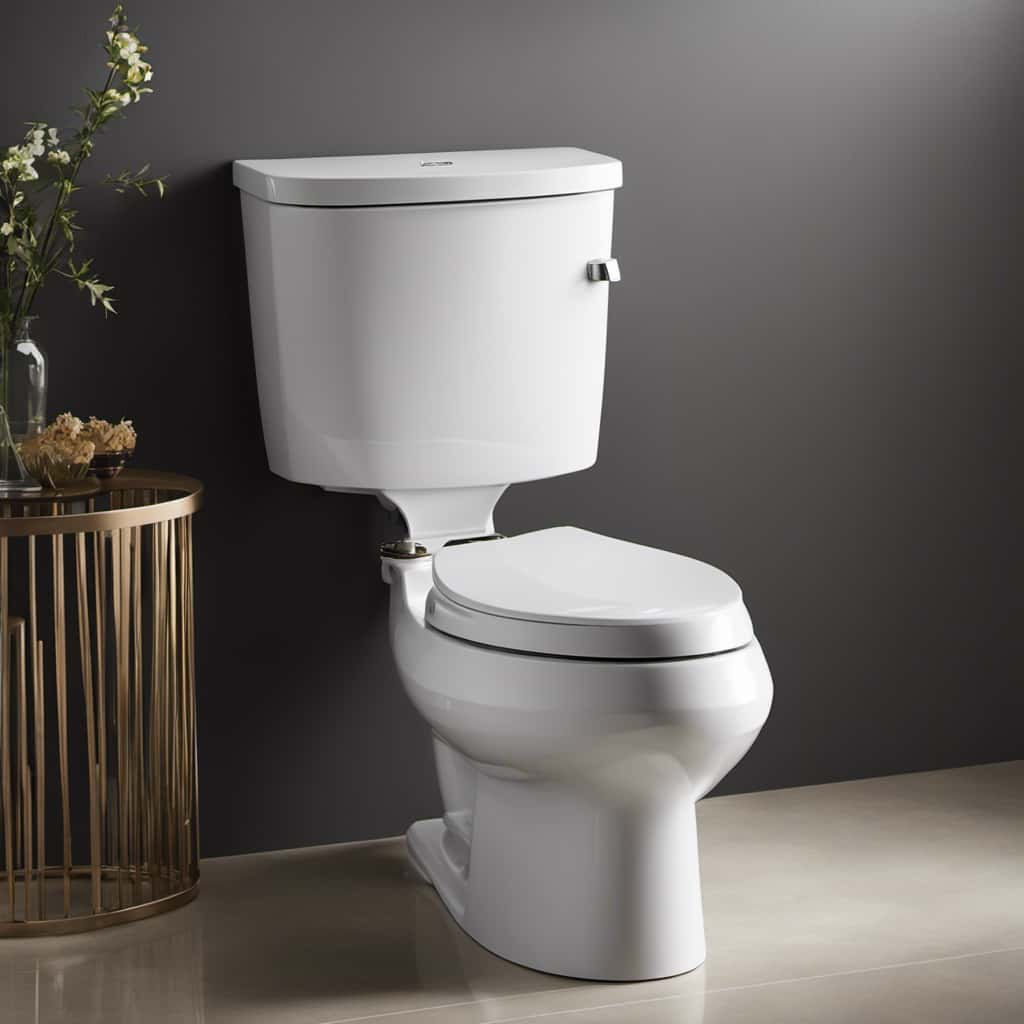
Does the Ove Bidet Toilet Require Any Additional Plumbing or Electrical Work During Installation?
No, the Ove Bidet Toilet does not require any additional plumbing or electrical work during installation. It is designed to easily connect to existing water and electrical connections, making the installation process hassle-free.
What Is the Warranty Period for the Ove Bidet Toilet?
The warranty period for the Ove Bidet Toilet is a crucial consideration when evaluating its suitability for mobility issues. It is important to thoroughly understand the terms and conditions of the warranty to ensure long-term satisfaction and peace of mind.
Can the Ove Bidet Toilet Be Installed in Any Bathroom Size or Layout?
Installing the Ove Bidet Toilet in any bathroom size or layout is feasible due to its compact design and flexible installation options. Our team ensures that bathroom space is maximized without compromising functionality.
Conclusion
In conclusion, the Ove Bidet Toilet offers numerous benefits and innovative features that make it a superior choice compared to traditional toilets.
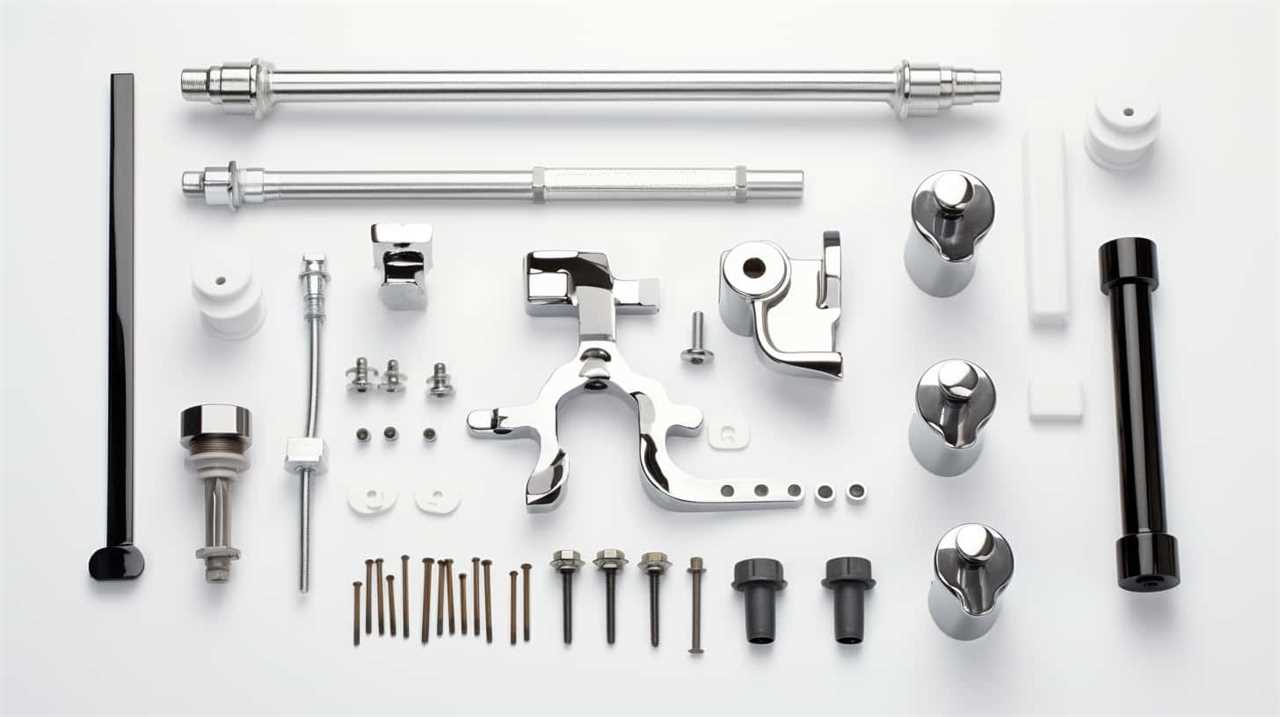
Its advanced functionality and comfortable design provide a luxurious and hygienic bathroom experience.
With easy installation and simple maintenance, the Ove Bidet Toilet is a reliable and convenient option for any household.
Its exceptional performance and efficiency will leave you feeling like you have found the holy grail of toilets.
With an impeccable eye for detail and a passion for bathroom-related, Ava leads our editorial team gracefully and precisely.
Under her guidance, Best Modern Toilet has flourished as the go-to resource for modern bathroom enthusiasts. In her free time, you might find Ava exploring antique shops and looking for vintage bathroom fixtures to add to her collection.
FAQ - Advanced Bathroom Queries
Do Turkish Toilets Have Water or Paper

We understand what you may be wondering: “Do Turkish toilets come with water or toilet paper?”
Well, let us fill you in on the fascinating cultural differences in toilet facilities.
In Turkey, they have their own unique customs and practices, including the water-based cleaning method.
We’ll explore the pros and cons of using water, and provide you with tips for navigating Turkish toilets.

So, get ready to master the art of toilet etiquette in Turkey!
Key Takeaways
- Turkish toilet customs revolve around using water for cleaning.
- Water-based cleaning ensures thorough cleanliness and removes bacteria.
- Using water for cleaning is considered more hygienic and gentle on the skin.
- Adjusting to the cultural norms of using water may take time.
Cultural Differences in Toilet Facilities
When it comes to toilet facilities, we noticed striking cultural differences between countries. Cultural practices and hygiene considerations play a significant role in shaping these variations.
In some countries, like Japan, toilets are equipped with advanced features like bidets and heated seats, reflecting their emphasis on cleanliness and comfort.
On the other hand, in many African countries, squat toilets are prevalent due to cultural traditions and the belief that this position is more hygienic.

In some Middle Eastern countries, water is preferred over toilet paper for cleaning purposes, reflecting their cultural practices and religious beliefs.
These cultural differences in toilet facilities highlight the importance of understanding and respecting diverse practices and preferences when it comes to hygiene and sanitation.
Turkish Toilet Customs and Practices
Turkish toilet customs and practices revolve around the use of water for cleaning purposes, reflecting their emphasis on hygiene and cleanliness. Throughout history, Turkish toilet hygiene practices have undergone a significant evolution. In traditional Turkish toilets, a copper jug filled with water was used for cleaning, while in modern times, bidets and sprayers have become more common. This transition highlights the Turkish people’s commitment to maintaining high standards of cleanliness. To provide a clearer picture of Turkish toilet customs, let’s take a look at the following table:
| Toilet Hygiene Practices | Historical Evolution |
|---|---|
| Use of water for cleaning | Traditional Turkish toilets utilized a copper jug filled with water. |
| Bidets and sprayers | Modern Turkish toilets often feature bidets or sprayers for a more efficient and thorough clean. |
Understanding these customs sets the stage for exploring the water-based cleaning method in the subsequent section.
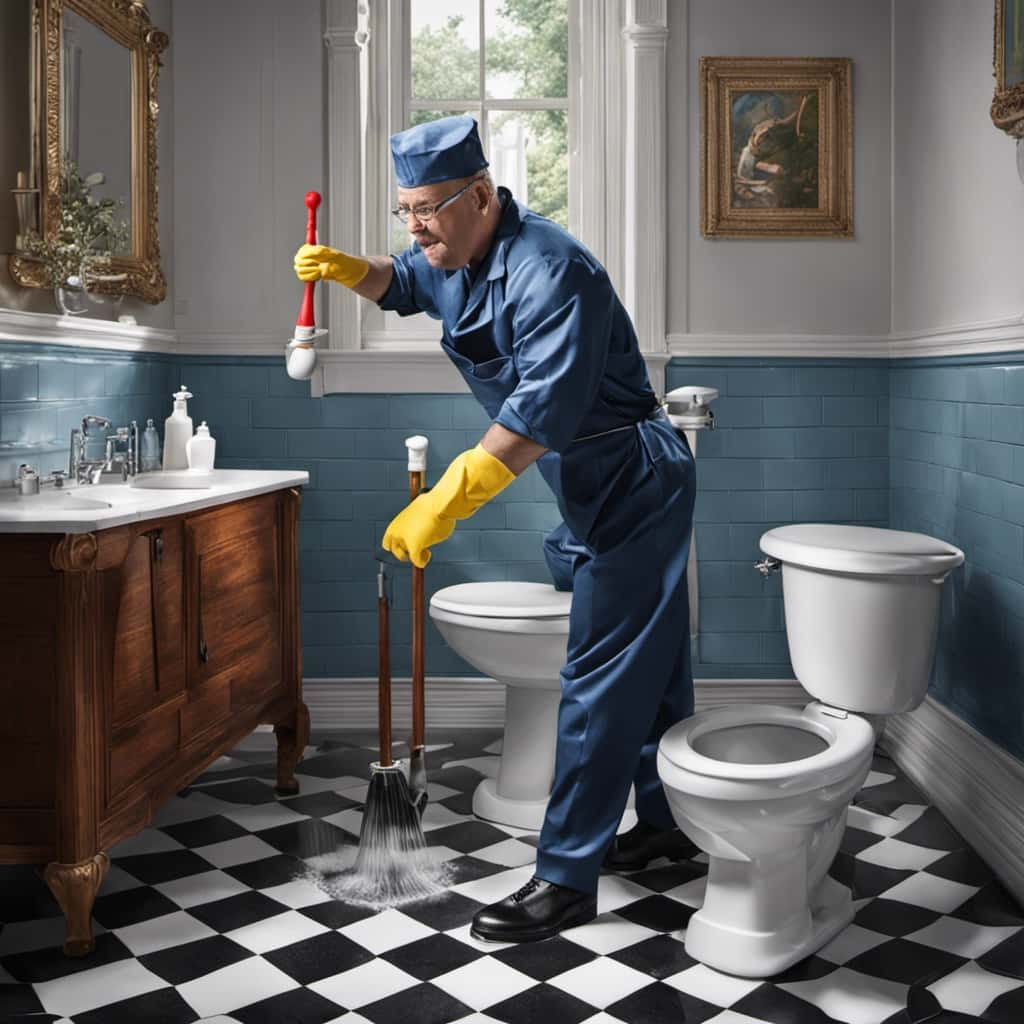
The Water-Based Cleaning Method
As we delve into the topic of Turkish toilet customs and practices, it’s important to examine the water-based cleaning method that has been a significant part of Turkish hygiene traditions. This method, which involves the use of water for cleaning oneself after using the toilet, offers several advantages in terms of toilet hygiene and environmental impact:
- Water-based cleaning ensures thorough cleanliness by effectively removing bacteria and germs.
- It minimizes the need for excessive toilet paper usage, reducing waste and environmental impact.
- The use of water promotes a soothing and refreshing feeling, enhancing personal hygiene practices.
- Water-based cleaning is gentler on the skin, reducing the risk of irritation or discomfort.
- It’s a more sustainable approach as it reduces reliance on paper products and contributes to a greener environment.
Pros and Cons of Using Water
Using water for cleaning oneself after using the toilet has both advantages and disadvantages. Let’s take a closer look at the pros and cons of this method.
| Advantages | Disadvantages |
|---|---|
| – Thorough cleansing | – Requires water source |
| – Hygienic | – Not eco-friendly |
| – Gentle on the skin | – Limited accessibility |
| – Reduces odor | – Potential mess |
| – Soothing and refreshing | – Cultural adjustment |
One of the main advantages of using water is the thorough cleansing it provides. Water effectively removes bacteria and leaves you feeling cleaner. It is also considered more hygienic compared to using only paper. Additionally, water is gentle on the skin, preventing irritation or discomfort.
However, using water does come with some disadvantages. It requires access to a water source, which may not always be available, especially in outdoor or public restrooms. This method is also not eco-friendly, as it leads to increased water usage. Moreover, it may take some time to adjust to the cultural norms of using water for cleaning oneself after using the toilet.

Tips for Navigating Turkish Toilets
When visiting Turkey, it’s helpful to familiarize ourselves with practical tips for navigating the toilets. Here are some important tips to keep in mind:
- Maintain Toilet Hygiene: Carry your own toilet paper or wet wipes as they may not be provided. It’s also a good idea to bring hand sanitizer for extra cleanliness.
- Master the Squatting Position: Turkish toilets are typically squat toilets, so it’s important to know how to use them. Practice your squatting position before your trip to ensure comfort and stability.
- Watch Your Step: The floors in Turkish toilets can be wet and slippery, so be cautious when entering and exiting the facilities.
- Respect Local Customs: Remember that Turkish toilets may not have Western-style plumbing, so avoid flushing toilet paper or other items down the toilet.
- Be Prepared for Differences: Turkish toilets may lack certain amenities such as seat covers or privacy doors, so be mentally prepared for these differences.
Frequently Asked Questions
Are Turkish Toilets the Only Type of Toilets Used in Turkey?
No, Turkish toilets are not the only type used in Turkey. There are alternative toilet options available, such as Western-style toilets. To understand the history of toilets in Turkey, it is essential to explore their evolution over time.
Are There Any Specific Etiquettes or Customs Associated With Using Turkish Toilets?
When using Turkish toilets, it is important to be aware of Turkish toilet etiquette and traditional toilet customs. These customs may include using water instead of paper and following specific cleaning rituals.
How Do Turkish Toilets Compare to Western-Style Toilets in Terms of Cleanliness?
Turkish toilets differ from Western-style toilets in terms of cleanliness. Bidet toilets, common in Turkey, provide a more thorough cleaning experience. Cultural differences in toilet cleanliness exist, but it’s important to respect local customs.
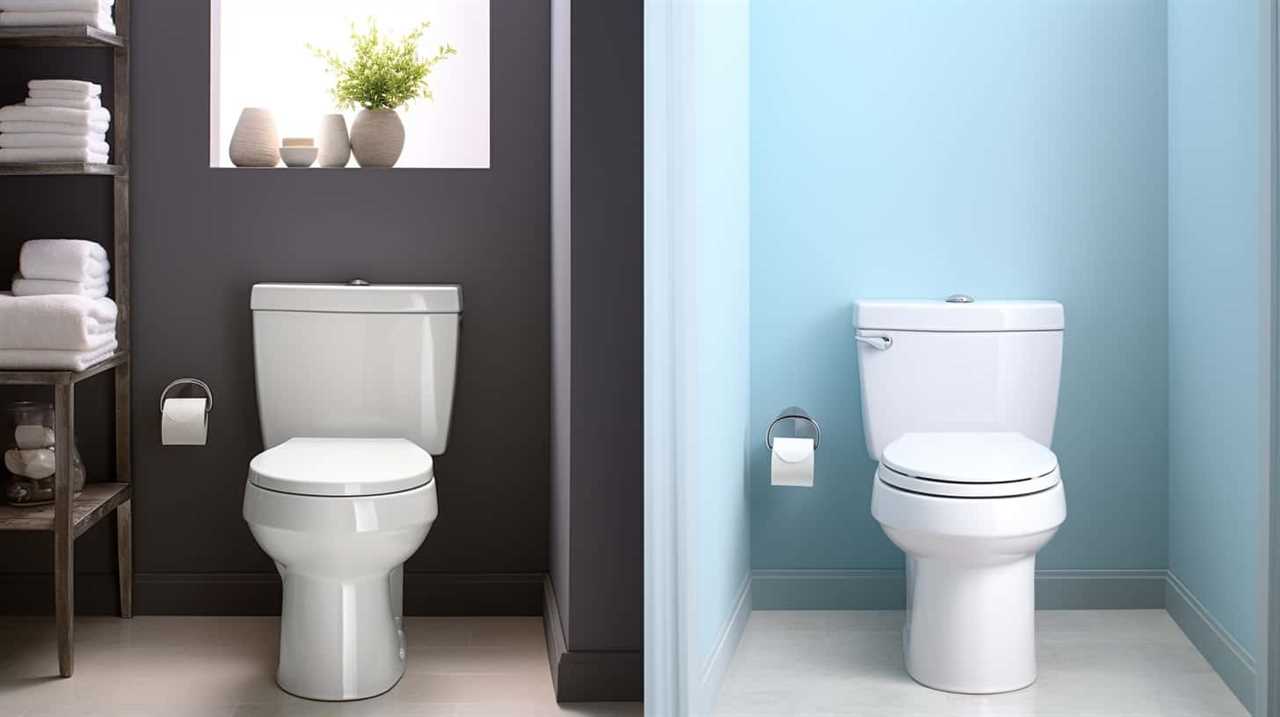
Are There Any Health Benefits or Drawbacks to Using Water for Cleaning Instead of Toilet Paper?
There are health benefits to using water for cleaning instead of toilet paper, such as increased cleanliness and reduced risk of infection. Additionally, using water is more environmentally friendly, as it reduces the amount of paper waste.
Are There Any Specialized Techniques or Tips for Using Turkish Toilets Effectively?
When it comes to using Turkish toilets effectively, there are various specialized techniques to consider. Understanding proper body positioning, using the built-in water source, and maintaining hygiene are key for an efficient and clean experience.
Conclusion
In conclusion, Turkish toilets provide a unique cultural experience by offering the choice between water and paper for cleaning.
While the water-based method is preferred by locals for its thoroughness and hygiene, it may take some getting used to for visitors.

By considering the pros and cons of each option and following the tips provided, navigating Turkish toilets can become a seamless and enlightening part of your cultural journey.
With an impeccable eye for detail and a passion for bathroom-related, Ava leads our editorial team gracefully and precisely.
Under her guidance, Best Modern Toilet has flourished as the go-to resource for modern bathroom enthusiasts. In her free time, you might find Ava exploring antique shops and looking for vintage bathroom fixtures to add to her collection.
-

 Bathroom Enhancements2 months ago
Bathroom Enhancements2 months agoWill Hot Bath Lower Blood Pressure
-

 FAQ - Advanced Bathroom Queries3 months ago
FAQ - Advanced Bathroom Queries3 months agoWhich Countries Use Bidets the Most
-

 Reviews1 month ago
Reviews1 month agoLDian Smart Toilet Review [2024]
-

 Reviews2 months ago
Reviews2 months agoKohler Innate Smart Toilet Review [2024]
-

 Reviews2 months ago
Reviews2 months agoKohler NUMI 2.0 Smart Toilet Review [2024]
-

 Reviews2 months ago
Reviews2 months agoCANEST Smart Toilet Review: The Ultimate Bathroom Upgrade [2024]
-

 Toilet Types2 months ago
Toilet Types2 months agoAre Bleach Tablets Bad for Your Toilet
-

 Reviews2 months ago
Reviews2 months agoWoodbridge B0970S Smart Bidet Toilet Review [2024]






















